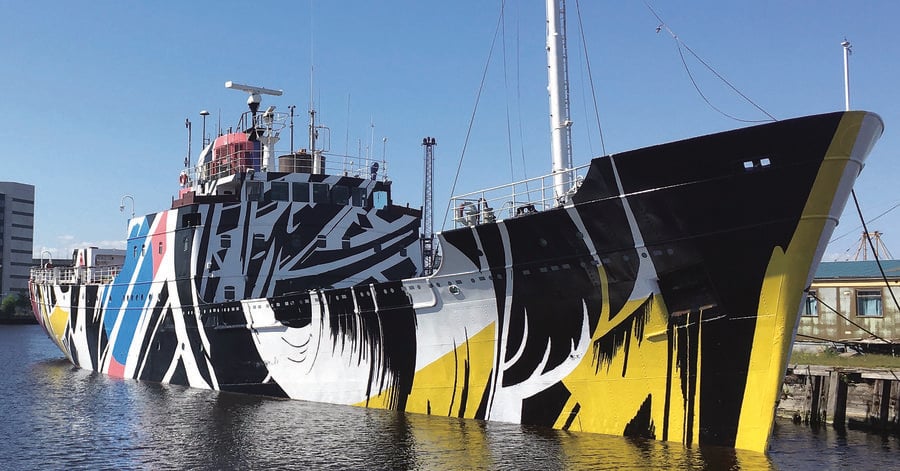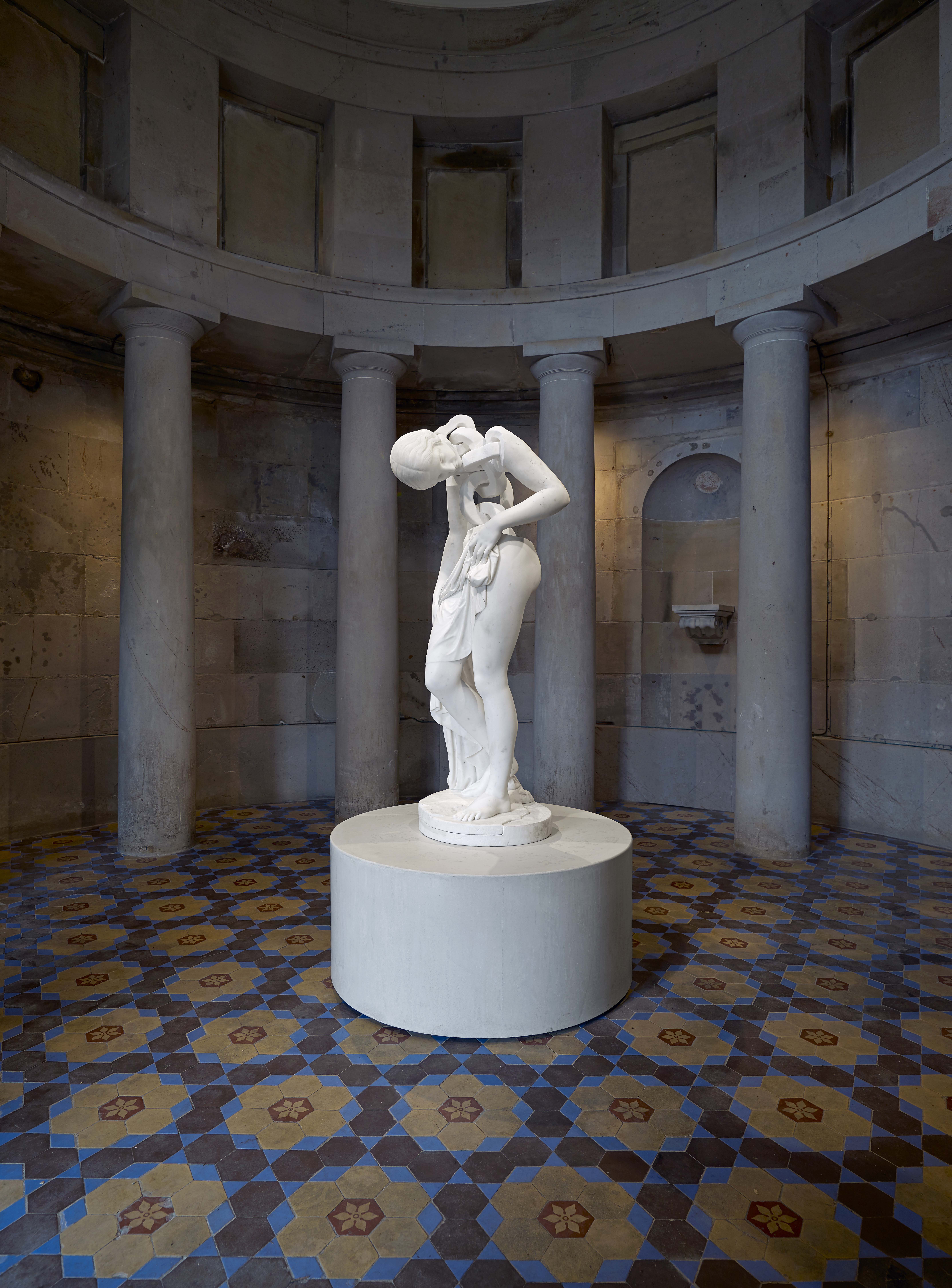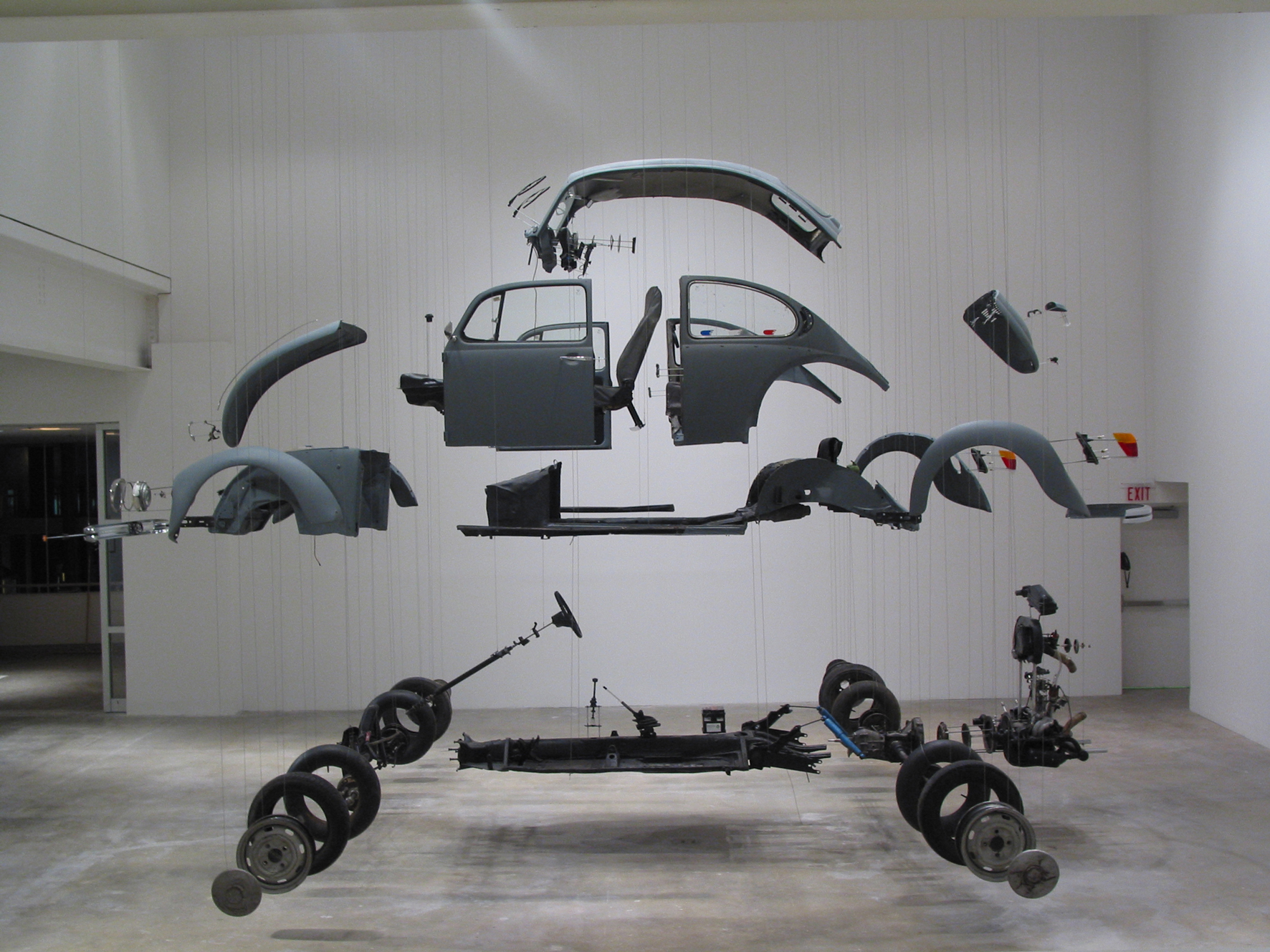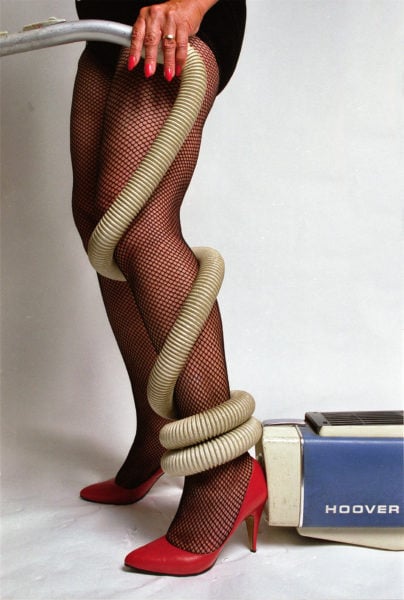Reviews
What Not to Miss at The 2016 Edinburgh Art Festival
Some sites are made accessible to the public for the first times in years.

Some sites are made accessible to the public for the first times in years.

Hettie Judah

The Edinburgh Art Festival tends somber this year. Seven new commissions explore the evolving debate around public monuments under the banner “More Lasting Than Bronze.” While only one—a feminist inflected “Dazzle Ship” by Ciara Phillips—is formally part of Britain’s wider “14-18 Now” World War I commemoration program, the events of a hundred years past make their presence felt. Beyond the commissions, the city’s gallery program likewise draws deep on the passage of time, and adjacent questions of memory and commemoration.
Such site-specific citywide commissions can elicit both delight and frustration: the fun of discovering rarely accessed sites can often be counterbalanced by a disjunction between locale and work, with the aura of the former often coming to dominate the latter. But here, despite powerful sites that include the nineteenth-century Burns Monument, there is satisfying intersection between location and work.
Nowhere is this more the case than in Roderick Buchanan’s Understanding versus Sympathy, installed in a side chapel of St Patrick’s Church, Cowgate, which was the heart of Edinburgh’s Irish community in the nineteenth century. At face value, the work is simple: An edited interview with the Irish-born, Edinburgh-based historian Owen Dudley Edwards plays out on a large screen in the darkened chapel. The subject is James Connolly, an Irish Republican who played a significant role in the Easter Rising of 1916, and was subsequently executed. Connolly was born to Irish parents in Edinburgh, and baptized at St Patrick’s, but during his political career took pains to conceal his links to Scotland and time spent in the British Army.

Jonathan Owen, Untitled, (2016). EAF commission, Burns Monument July-August 2016, Photo John McKenzie. Courtesy the Artist and Ingleby Gallery
As Connolly’s biographer, Dudley Edwards is inhabited by the story and spirit of his man, and that sense of shared history, of overlaps of place and experience, emanates from the work and its locale. Now in his late 70s, Dudley Edwards’s voice is pattinated by the richly-accented geographies of Dublin and Edinburgh, and swoops between a barely comprehensible growl and a rhetorician’s roar. Much of his anecdote is obscure or incomprehensible, but what emerges is a sense of historical palimpsest that builds to the present day.
Addressing less specific histories, Jonathan Owen positions a re-carved 19th-century marble nymph on an empty pedestal in the Burns Monument. Like books (which Owen elsewhere modifies in his ongoing Eraser Drawings series) artworks and monuments feel sacrosanct: even if unwanted, their destruction suggests brute-headed totalitarianism and an attempt to tamper with historical memory. Owen’s carefully re-carved nymph bows her head, a vast linked chain now taking the place of her torso—the knee-jerk applause to this redress for the endless female figures decorating monuments to famous men is tempered by lurking horror at this irreversible act of transformation.
Two sound works—Bani Abidi’s Memorial to Lost Words and Olivia Webb’s Voices Project—explore the role of song as an act of communion and as cultural monument. First installed in churches in Christchurch, New Zealand, Webb’s Voices Project broadcasts rehearsals, chatter, and song from the artist’s titular project bringing together choirs in communities with chapels damaged in the 2011 earthquakes. As with Buchanan’s work, likely much is lost by shifting the work away from its site of origin, but at a time of shocking destruction and loss of life around Europe, it hits a nerve. While there is discussion in the accompanying film about the power of community and coming together in song, the question of faith and succor—key to the roll of the church at times of loss—feels brushed aside.

Bani Abidi Memorial to Lost Words. Photo by Ross Fraser McLean, Studio RoRo
Abidi’s Memorial returns us to World War I, and its traces in India and Pakistan. Set either side of a 1970s debating chamber intended for the Scottish Parliament (which is in turn built within a neoclassical school building), the voices of men and women play as a call and response. From the women’s side come recordings of folk song dating from the era, begging men not to go to war. On the other are new vocal arrangements of letters sent back from the front, censored at the time and now resting in the archives of the British Museum.
Alongside a witty and faintly disturbing video work by Jack Saunders, and the slumping ceramic bowling pins and latex-sheathed objects awaiting a performance by Paloma Proudfoot and Aniela Piasecka, Dorian Jose Braun offers a highlight of the festival’s “Platform” exhibition for early career artists. Working with archives and experts in the fields of song, instruments, and sound recording, Braun explores the resonance of the voice and of wood, Goethe’s Faust, and the history of the Rondello, an instrument said to closely echo the sound of the human voice. It’s thoughtful, well made and unexpected.

Damián Ortega, Cosmic thing, (2002). Courtesy The Museum of Contemporary Art, Los Angeles
Proudfoot and Piasecka last year showed at the artist-run space The Number Shop (this year presenting a changing weekly program of shows)—pointing to a healthy crossover between this fringe and the festival program proper. Another artist-run space, Rhubaba, had a tightly conceived show looking at art and objects and art as objects, with Susan Mowatt’s luscious tapestries performing as draft excluders and teaching aids, and Emma Hart searching for lost treasures in the fluff beneath her furnishings.
Two standout sculpture shows underpin the wider gallery program. Kenny Hunter explores the nature of reproductions at the Edinburgh Sculpture Workshop, using methods ranging from CMYK printing, to casting, to selective laser sintering to produce objects ranging from vast clay potatoes to mushroom clouds the size of a mushroom. At The Fruitmarket Gallery, Damián Ortega contemplates the relationship between earth (in the form of clay: his material) and water (as river, iceberg, cloud and wave: his subject). Alongside the earth and water works is a project charting the history of tools, from flint to iPhone, taking in bone harpoons and VHS tape along the way, lovingly formed in greying clay from Oaxaca.

Jo Spence, <i(1989) Collaboration with Rosy Martin. Copyright the Estate of Jo Spence. Courtesy Richard Saltoun Gallery
At Stills, an exhibition headlined by Jo Spence’s self portraits also contains earlier bodies of work, looking at the rights and (rites) of the child in 1970s London and—as part of the Polysnappers collective—the portrayal of family and its alternatives in the advertising of the early 1980s (how little has changed). Stills had its funding from Creative Scotland cut at the end of last year, ditto Inverleith House, an exceptional gallery located in the middle of the city’s Botanic Garden. During the festival it’s carrying a survey show ranging from sculpture by Isa Genzken, fantasias courtesy Cerith Wyn Evans, paintings by Nicholas Party, text work by Douglas Gordon, and botanical illustrations and teaching diagrams. Celebrating thirty years of instinctive and adventurous programming, one hope that it is not, simultaneously, a memorial to it.
Edinburgh Art Festival opens July 28 and runs through August 28, presenting more than 40 exhibitions across Edinburgh’s museums, galleries, and artist-run spaces, including seven new commissions as part of the 2016 Commissions Programme.